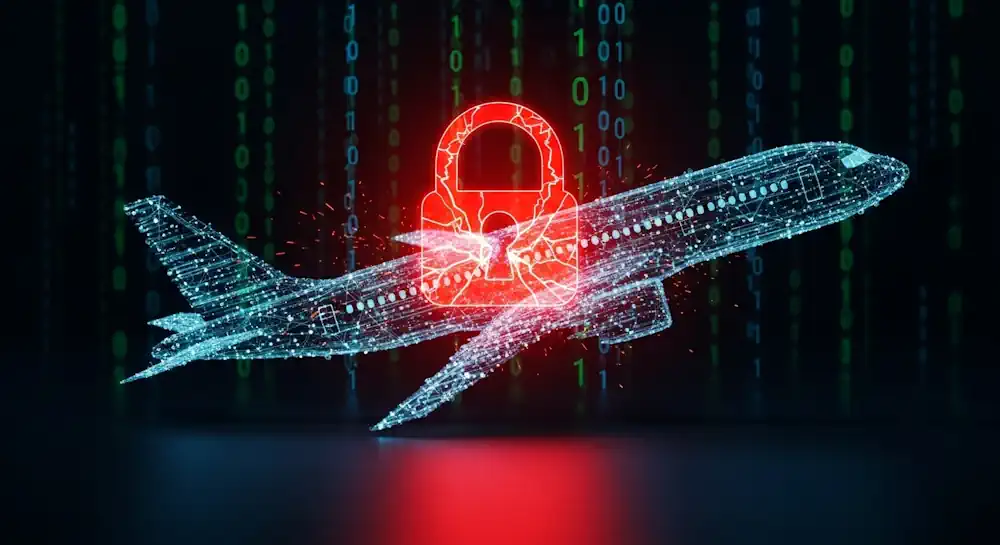A major cybersecurity incident has exposed the personal data of roughly five million Qantas customers, following a ransom standoff between the airline and a hacker group operating under the name Scattered Lapsus$ Hunters. The attackers released the stolen data on the dark web after their payment deadline expired, marking one of the most significant corporate data breaches in Australia this year.
Attack Timeline and Methods
According to investigators, the intrusion occurred several weeks before the public disclosure. The attackers reportedly gained access through a third-party system used by Qantas for customer engagement and loyalty program management. Once inside, they extracted large volumes of data, including customer names, email addresses, phone numbers, frequent flyer details, and partial passport information. Financial data and flight records were not included, though cybersecurity experts warn that the leaked information could still be used for identity theft and phishing scams.
The hackers initially demanded an undisclosed sum in cryptocurrency in exchange for withholding the data. When Qantas declined to negotiate, the group posted a portion of the stolen files on a dark web forum, later followed by a full release. Analysts believe this pattern aligns with previous operations by Scattered Lapsus$ Hunters, a group known for targeting multinational firms and leveraging social engineering to bypass corporate security measures.
Qantas and Government Response
Qantas said it detected unusual network activity late last month and immediately began containment procedures. The airline temporarily restricted access to parts of its internal systems and engaged external cybersecurity experts to assist in the investigation. Australian authorities, including the Australian Cyber Security Centre (ACSC) and the Office of the Australian Information Commissioner, were notified and are coordinating response efforts.
In a public statement, Qantas emphasized that flight operations and booking systems remain unaffected, and that passwords used for customer accounts have been reset as a precaution. The company has started contacting affected customers directly and has offered free credit monitoring services to those impacted.
The Australian government has called the breach a “serious wake-up call” for the aviation and transportation sectors. Officials indicated that new regulations under the forthcoming National Cyber Resilience Strategy will likely require stronger incident reporting and third-party vendor oversight for critical infrastructure operators.
Expert Analysis and Industry Impact
Cybersecurity analysts view the Qantas breach as part of a wider escalation in attacks against the aviation and travel industries. These companies store vast amounts of personally identifiable information, making them valuable targets for extortion and identity fraud. According to figures from the Australian Cyber Security Centre, ransomware and data extortion incidents have increased by nearly 30 percent since 2024, with the transportation and logistics sectors showing the steepest growth in exposure.
Experts suggest that the attack demonstrates how complex supply chains and legacy IT systems can create hidden vulnerabilities. Even when an organization maintains robust internal defenses, attackers often exploit smaller third-party providers with weaker security protocols. Once those systems are compromised, threat actors can pivot into larger corporate networks.
The Scattered Lapsus$ Hunters group has previously been linked to breaches of technology, telecommunications, and logistics firms across Europe, North America, and Asia. Their strategy typically involves stealing customer or employee data, issuing ransom demands, and releasing the information publicly when negotiations fail. Security analysts note that the group’s latest campaign, which includes the Qantas attack, has reportedly affected more than 40 companies and exposed nearly one billion individual records worldwide.
Long-Term Consequences for Consumers
The exposure of Qantas customer information could have lasting effects for individuals whose data was leaked. Experts warn that personal identifiers such as names, contact details, and loyalty numbers can be cross-referenced with other databases to enable targeted scams. Customers are being urged to monitor email accounts and credit activity closely, and to remain cautious of messages claiming to be from Qantas or its partners.
Consumer protection agencies have also emphasized that the breach underscores the importance of modern data-handling standards in Australia. Under national privacy regulations, Qantas may face fines or enforcement actions if investigators determine that its systems or vendor contracts did not meet required security benchmarks.
Broader Lessons for Critical Infrastructure
The Qantas incident has renewed discussion about the resilience of Australia’s critical infrastructure sectors, particularly those involving transport, utilities, and communications. As digital transformation accelerates, many of these industries rely on interconnected networks that blend operational technology with cloud-based customer systems. This convergence, experts say, creates both efficiency and vulnerability.
Analysts recommend that large organizations adopt continuous threat monitoring, multi-factor authentication for all administrative accounts, and stricter oversight of third-party vendors. Government cybersecurity officials have reiterated that data protection must extend beyond corporate perimeters to include the full supply chain.
While Qantas works to restore customer confidence and enhance its defenses, the incident serves as another reminder that no organization, no matter how established, is immune to cyber extortion. For many in Australia’s aviation and security sectors, the breach represents a turning point in how the country approaches both prevention and accountability in the face of increasingly aggressive global cyber threats.

